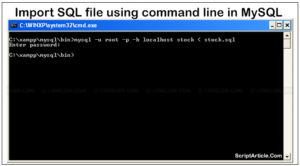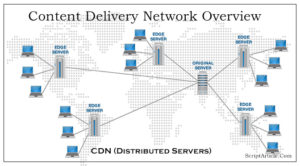Hot linking can also be called as “leeching” or “bandwidth theft” is a term referring to when a webpage of one website is direct linking to the images/videos or other multimedia files on the web host of another website (usually without permission, thus can be called as stealing bandwidth).
E.g. Like an <img alt=”” /> tag to display an image you found on someone else webpage so it will appear on your site, eBay auction listing, weblog, forum message post, etc.
Bandwidth can be referred as the amount of data transferred from a website to a user’s computer. Whenever you view a web page, you use that site’s bandwidth to display the files. Since web hosts charge based on the amount of data transferred, bandwidth is the issue. If a site is over its monthly bandwidth, it’s billed for the extra data or taken offline.
One of the most common occurrences of “hot linking” is when people post on a forum and they hotlink pictures from another website to use as avatars or signature images on the message boards.
Some disadvantages of hot linking are that the webpage generally loads slower when you link to images stored on a different server than the webpage is hosted on, and the owner of the image has full control to disable hot linking, or delete, rename, or make worst it, do a “switcheroo” (i.e. switching the file name to be another image which is sure to cause the hot linker embarrassment) of the hot-linked image.
Common methods of preventing hot linking are by using an .htaccess file, using the “Hotlink Protection” offered in control panels such as Cpanel, or simply renaming image files periodically.
HOW COULD YOU KNOW THAT YOU ARE HOTLINKING?
<img src=”image.jpg” height=”350″ width=”200″>
<img src=”http://notyourwebsite.com/image.jpg” height=”350″ width=”200″>
This img tag tells the site to request the image.jpg from a different server. Every time the page is loaded, the outside server has to use its bandwidth to display the image. To avoid this problem, don’t link to files on servers. To share images and files on your own web page, upload them to your own server’s directory or to a free image hosting service that allows direct linking.
Below are some free image/video hosting service providers
http://www.dropshots.com/
http://photobucket.com/
DRAWBACK OF HOTLINKING
Hot linking can have a lot of undesirable results. One is the so-called “switcheroo“.
Displaying an image or file that doesn’t belong to could be a violation of copyright, making you open to litigation. The owner of the file could utilize DMCA law to have your site shut down and your information given for use in legal proceedings.
HOW CAN YOU TEST YOUR WEBSITE HOTLINKED?
Enter the complete URL (ex: http://yoursitename.com/image.jpg) to see if your image can be loaded and hot linked by other server.
http://www.free-webhosts.com/hotlinking-checker.php
PREVENT HOTLINKING USING .htaccess
Below code can be written in .htaccess file to stop hot linking and bandwidth theft.
RewriteEngine on
RewriteCond %{HTTP_REFERER} !^$
RewriteCond %{HTTP_REFERER} !^http://(www\.)?yourdomain.com/.*$ [NC]
RewriteRule \.(gif|jpg)$ http://www.yourdomain.com/badimage.jpg [R,L]
Replace yourdomain.com to your domain name and badimage.jpg to your image which you want to show instead of hot linked image.
Please be sure your mod_rewrite is ON on your server before above .htaccess updates.



